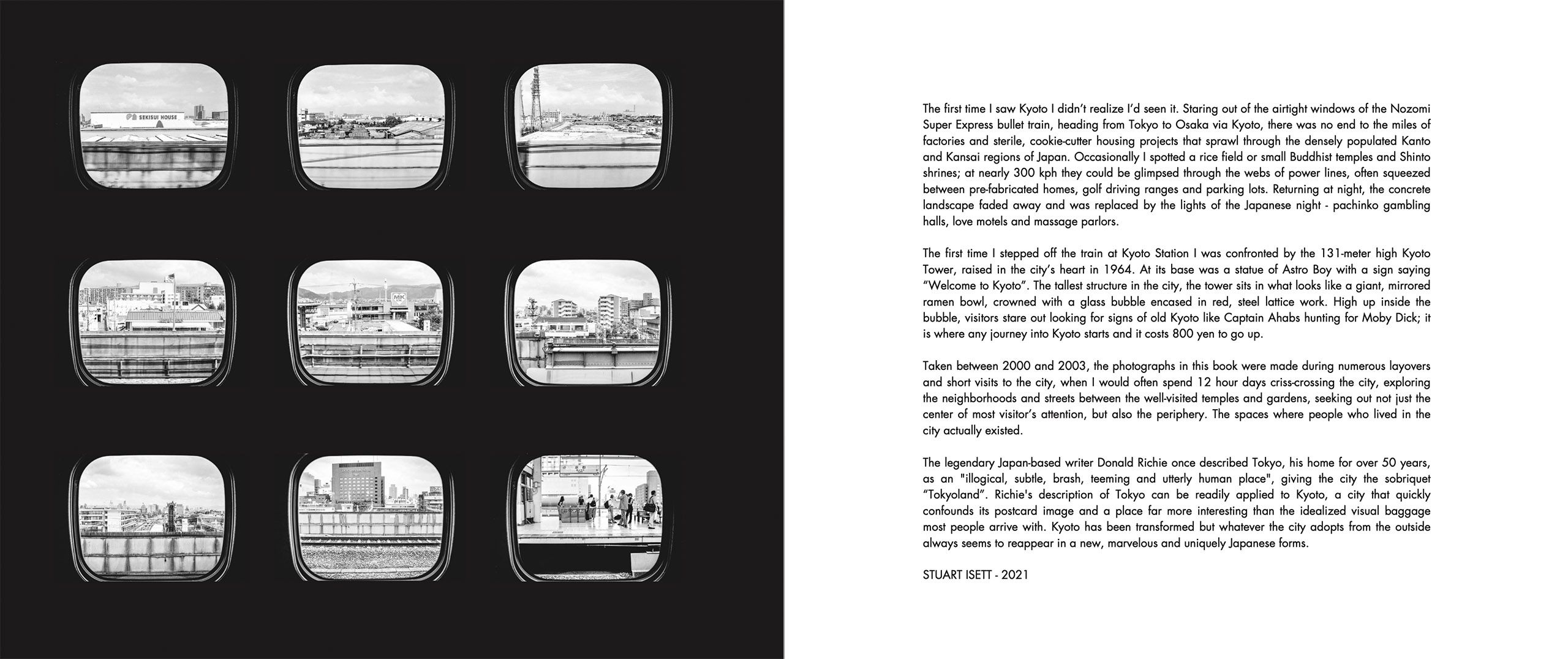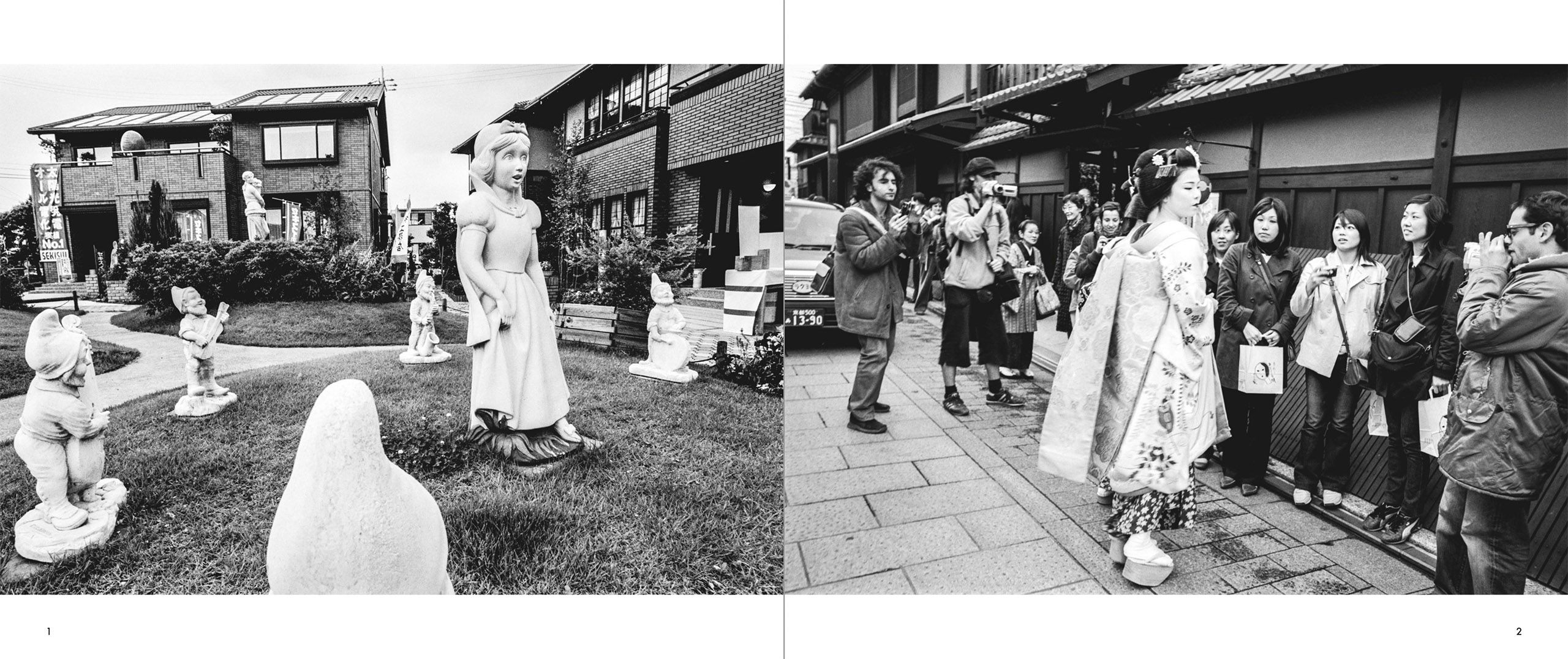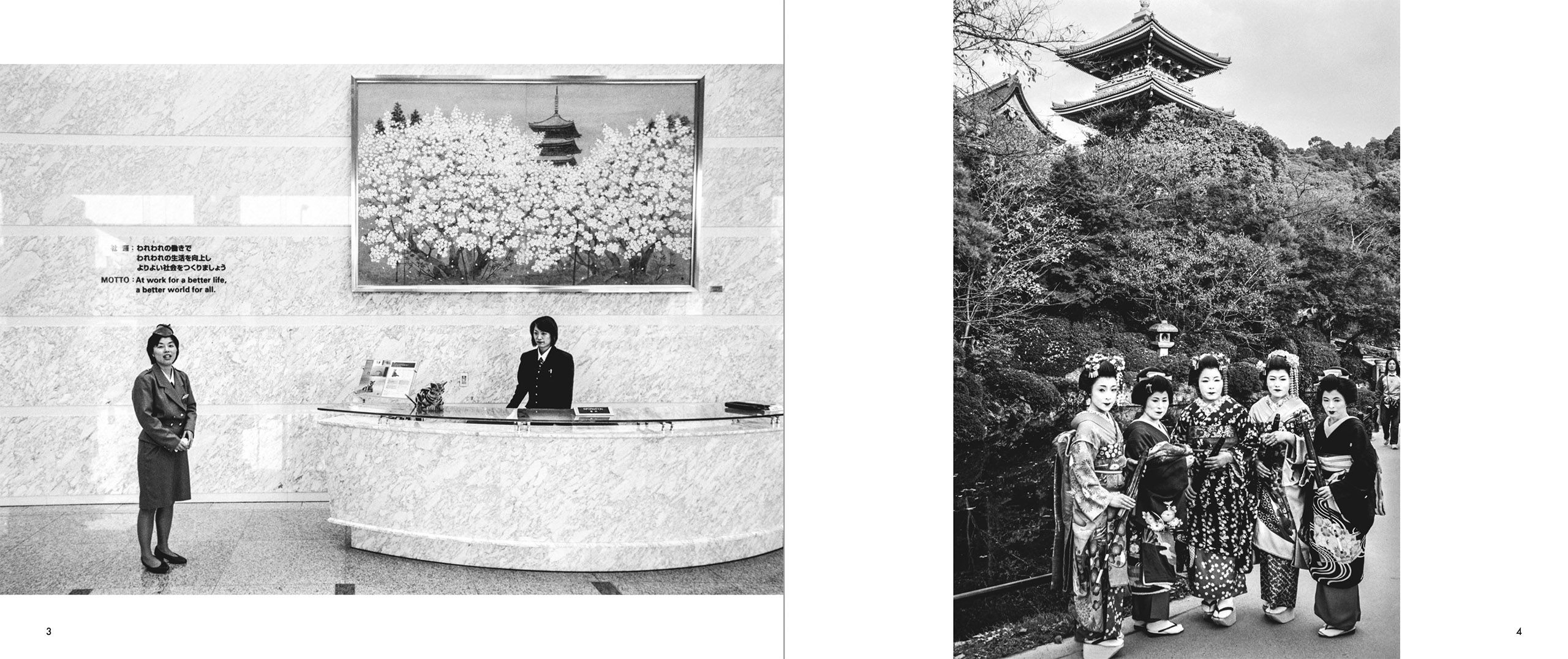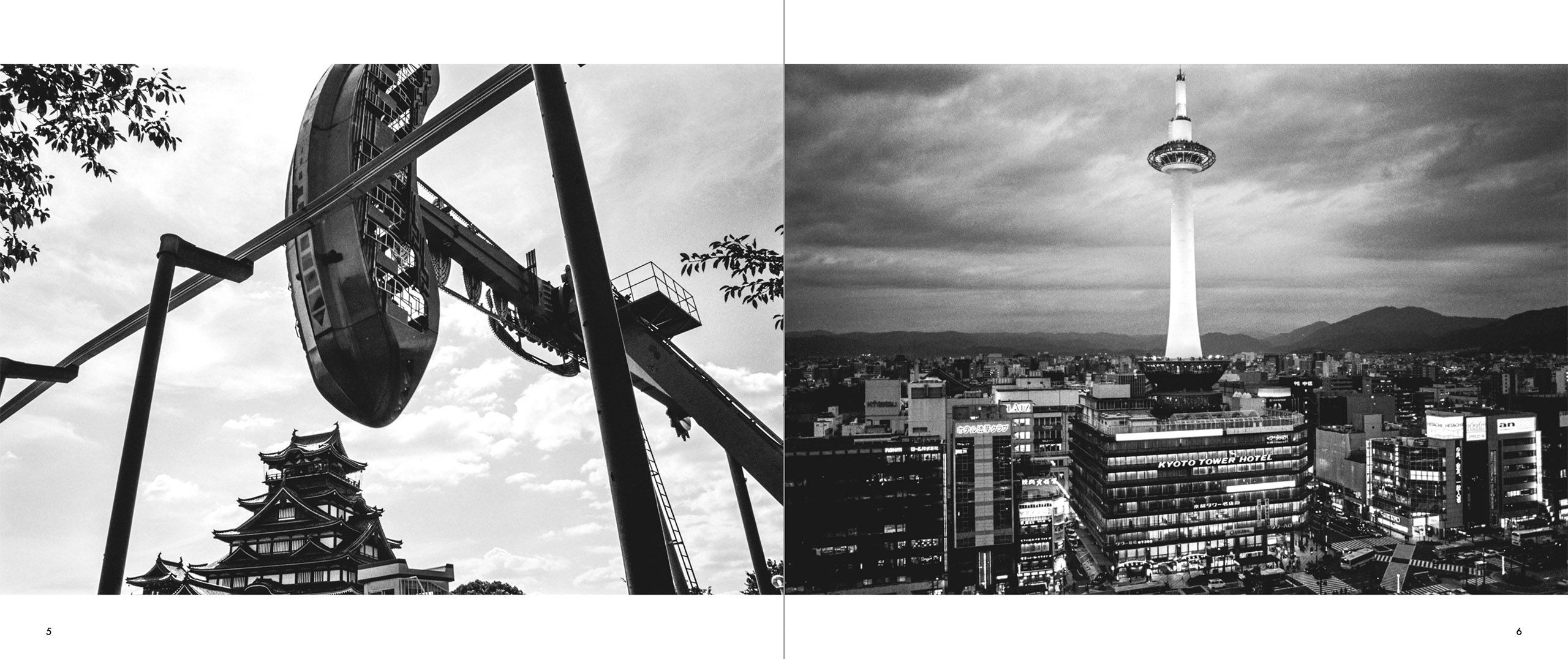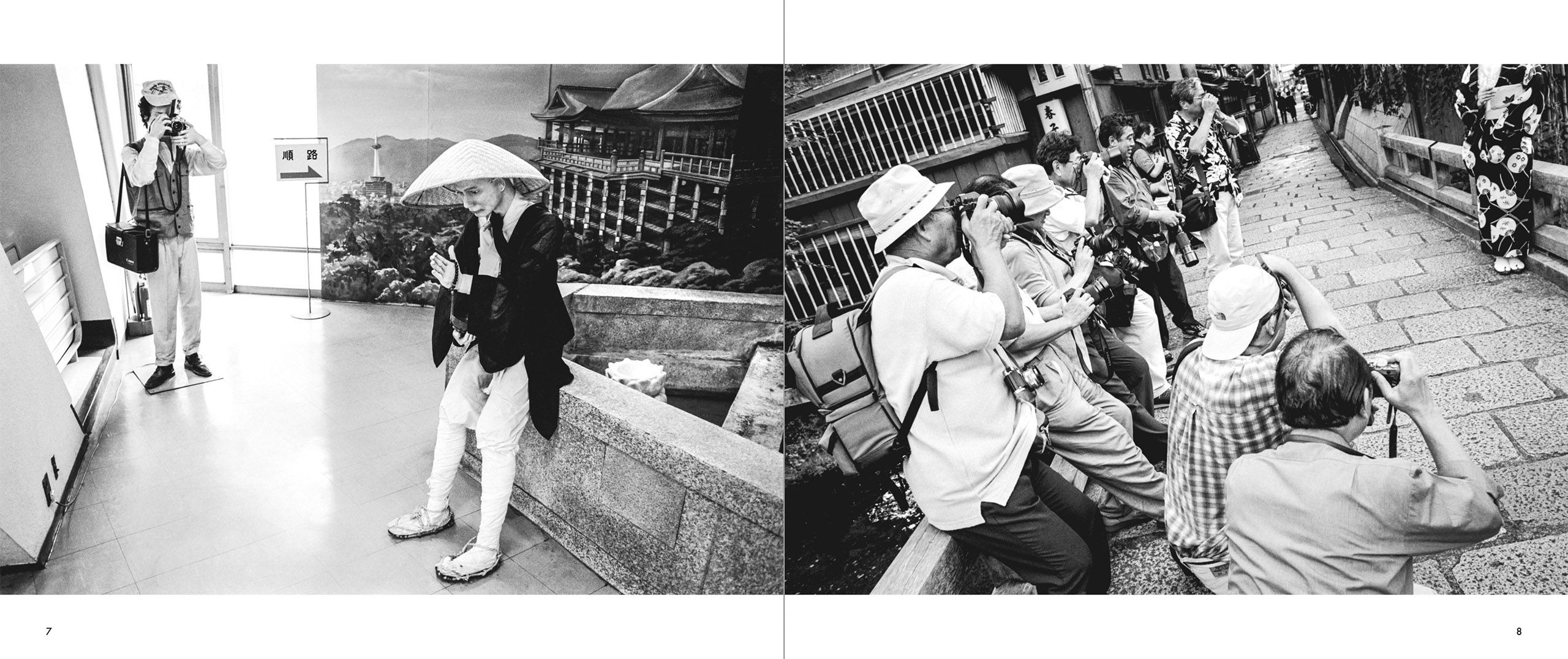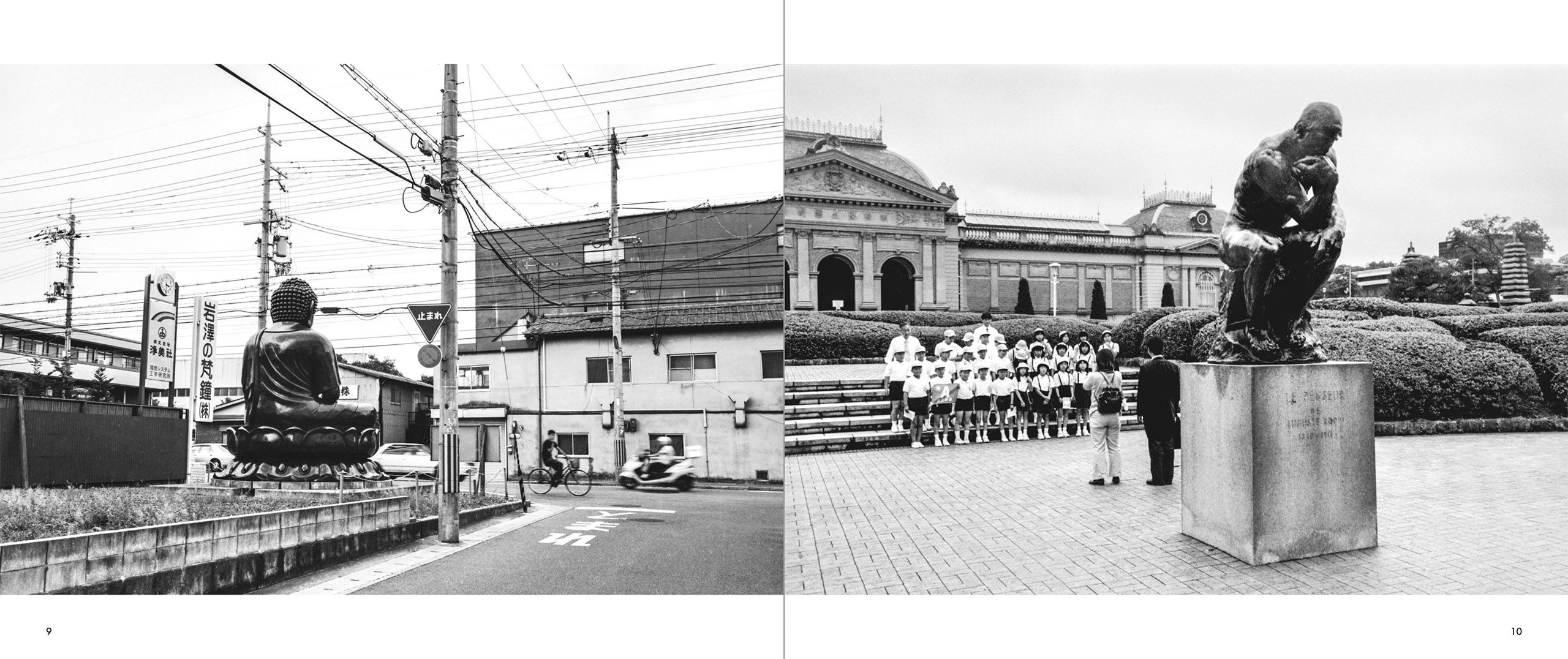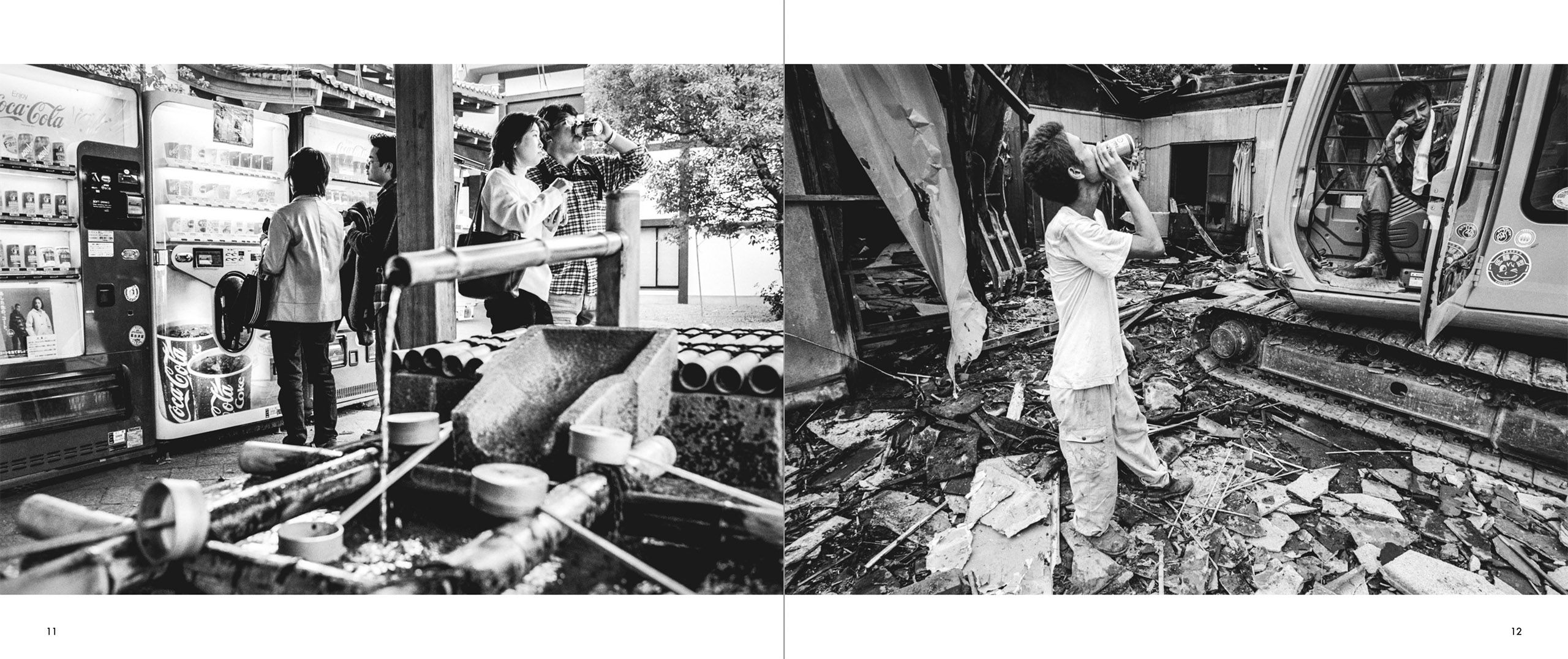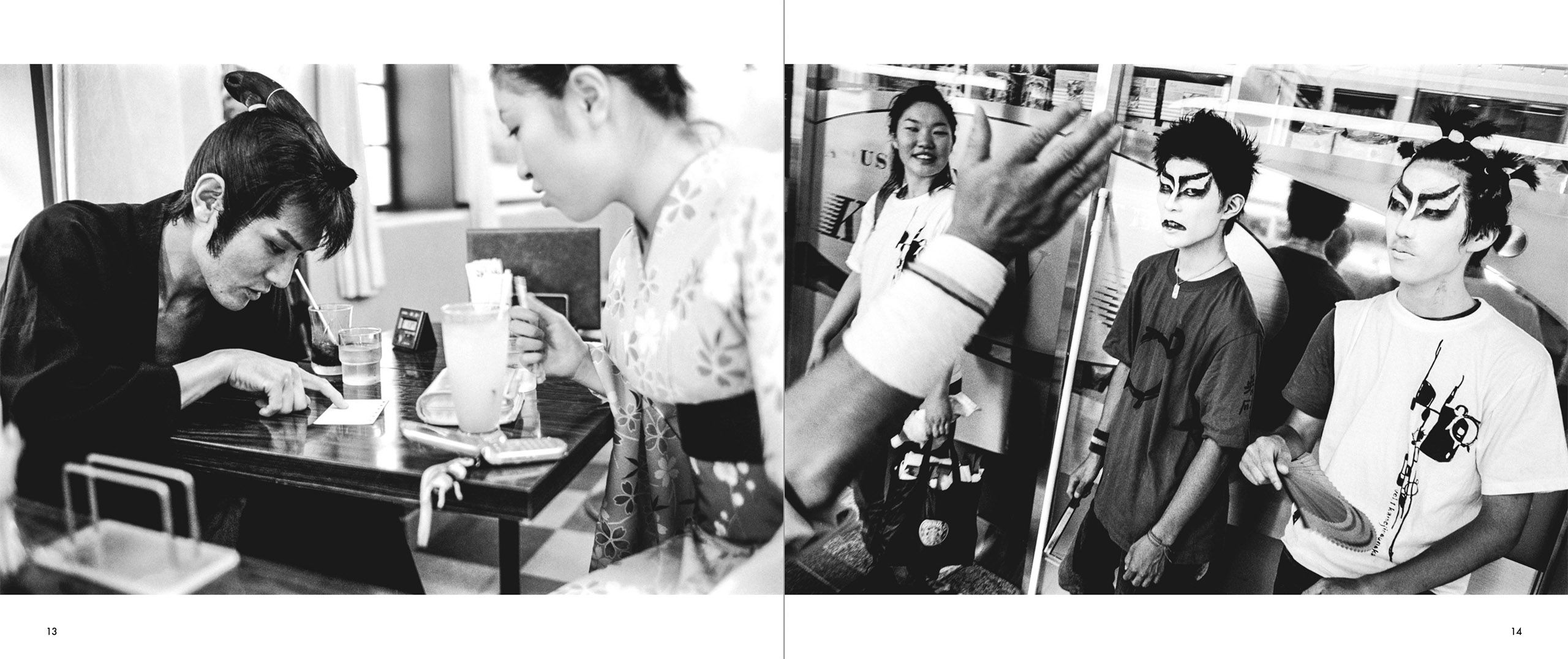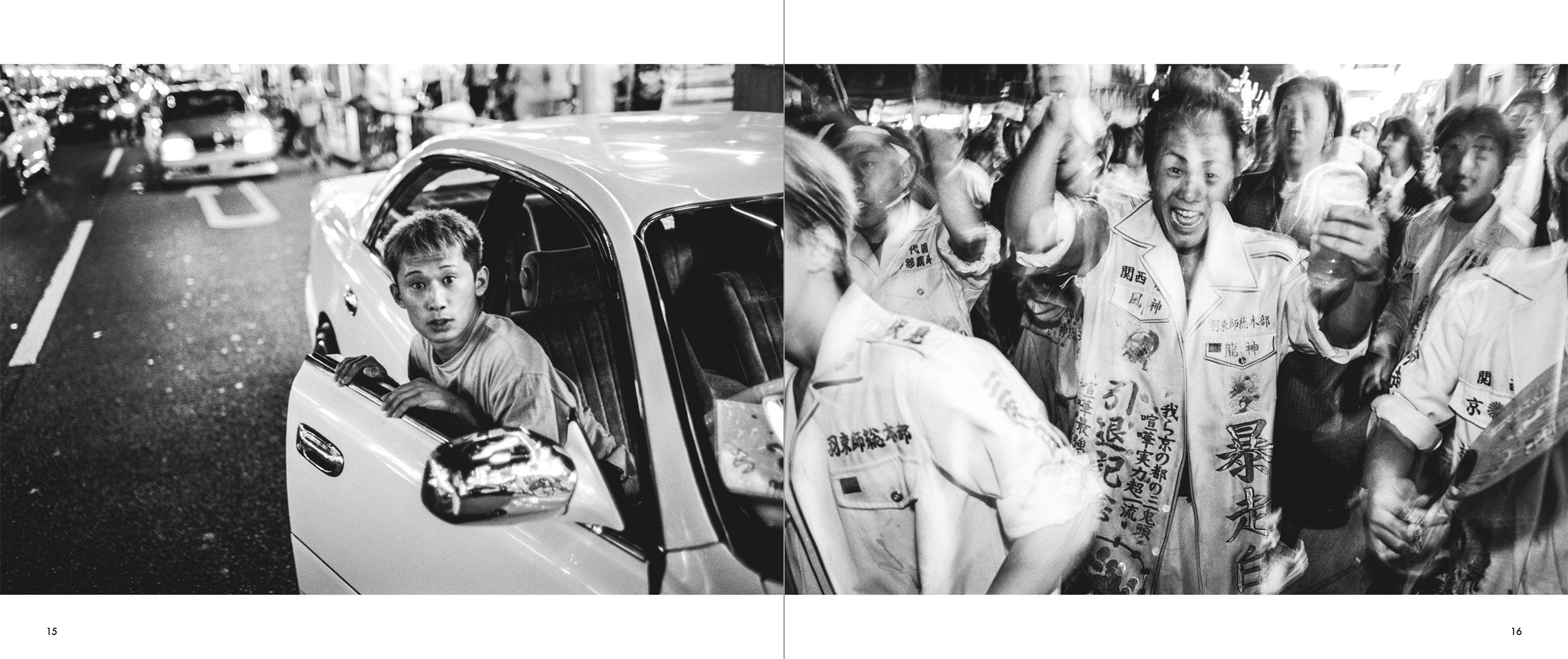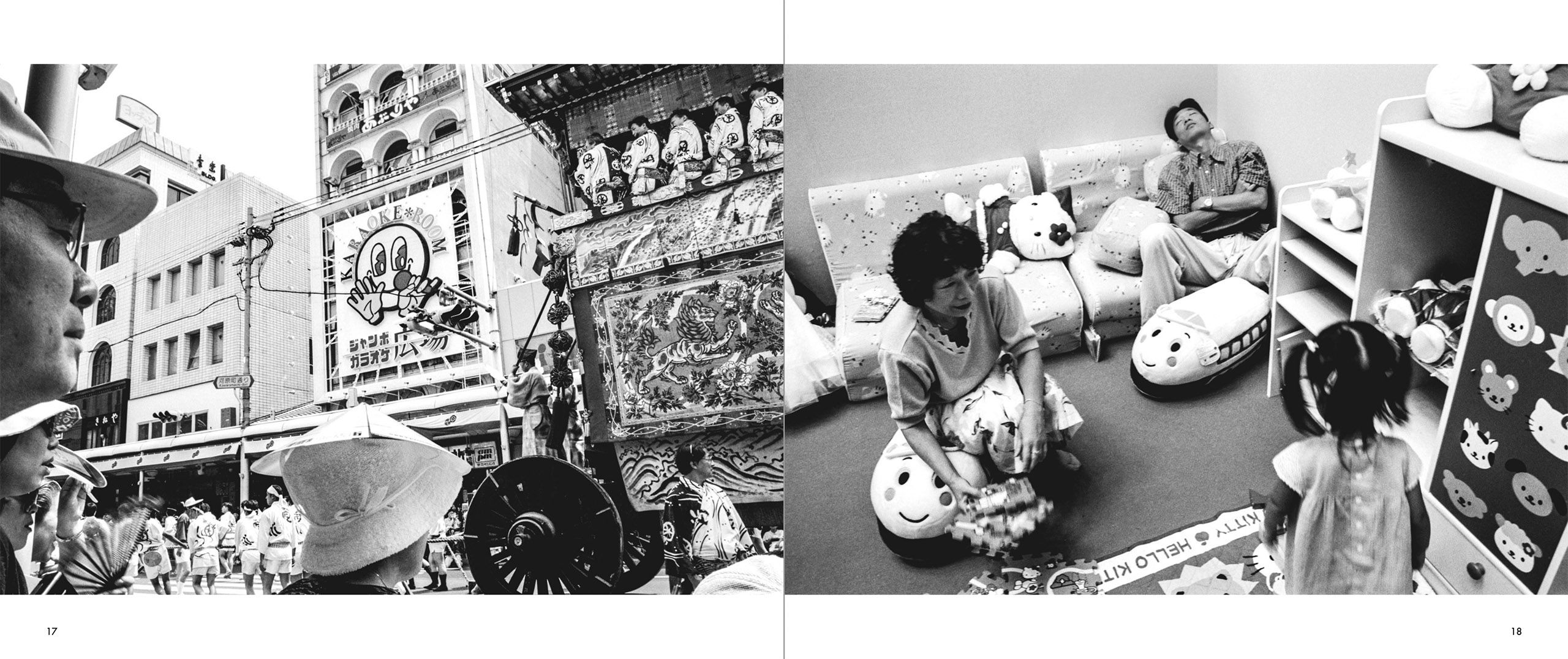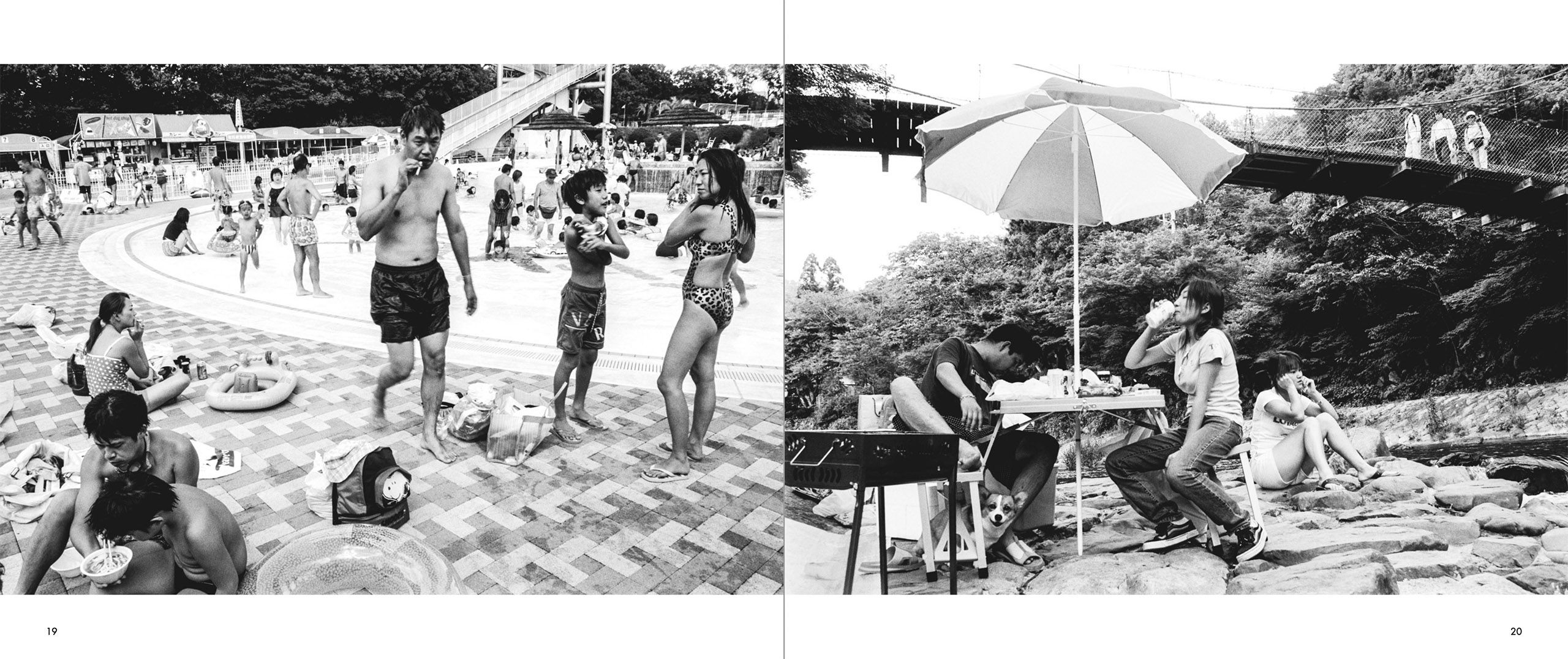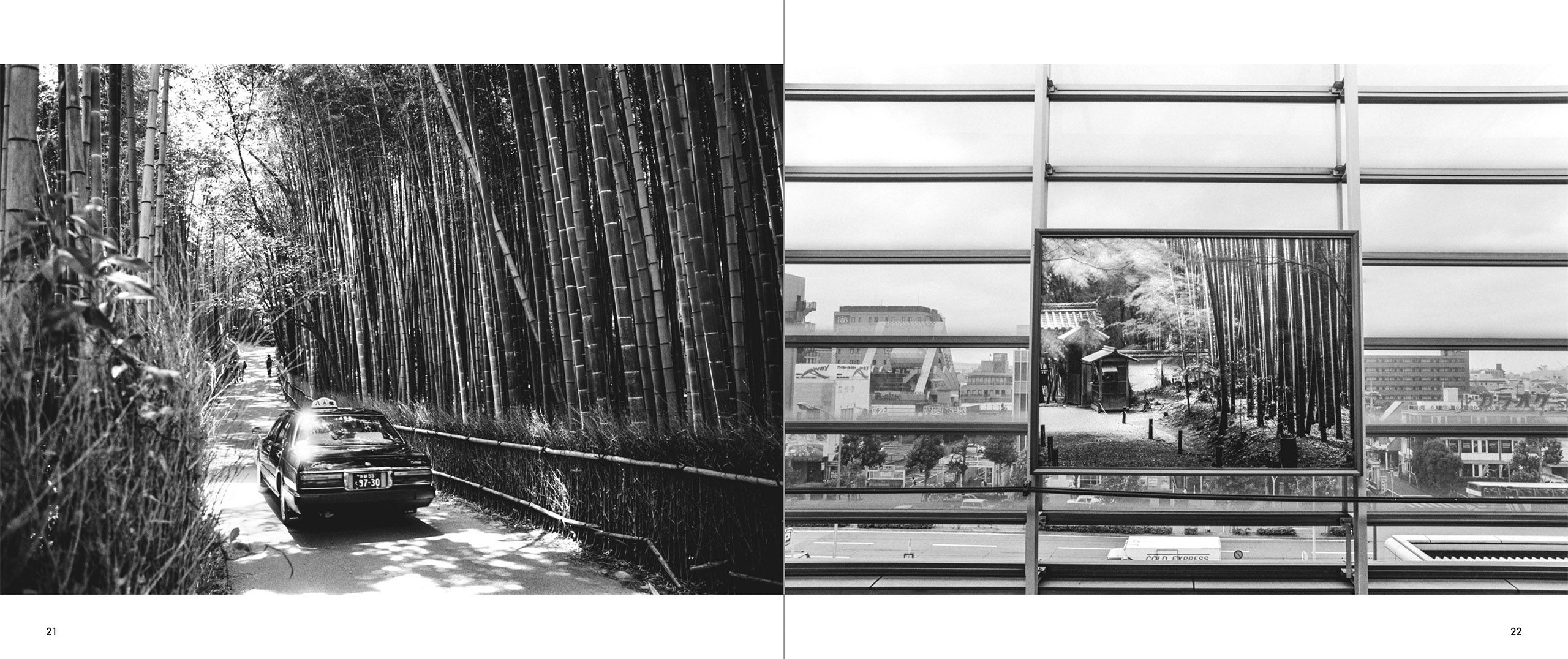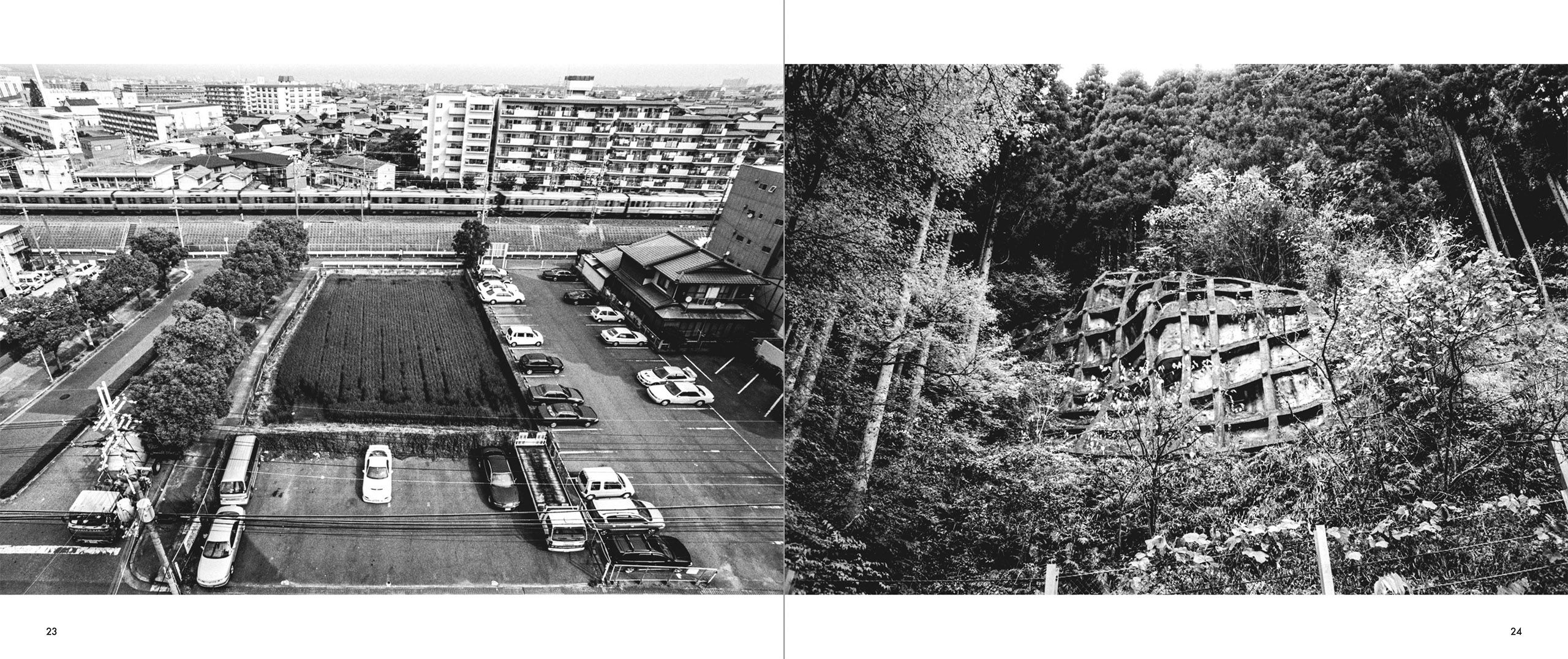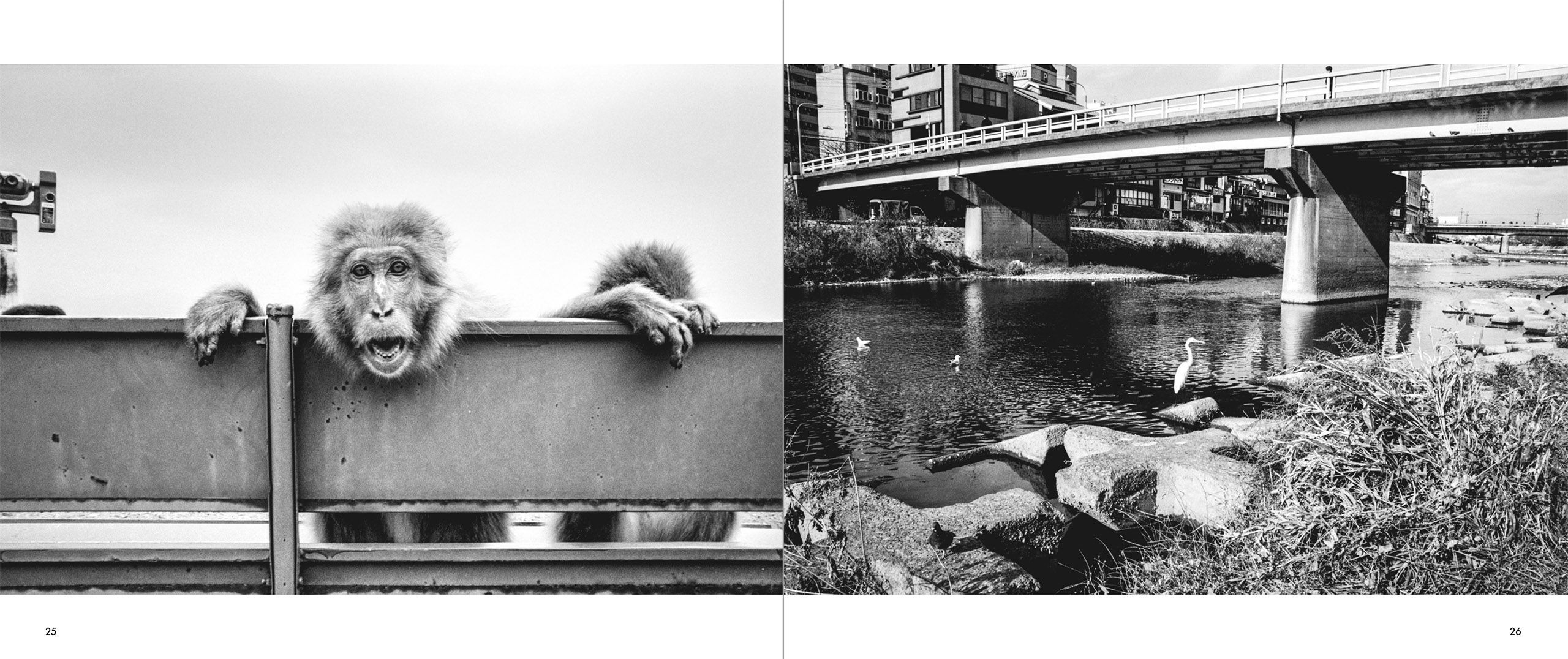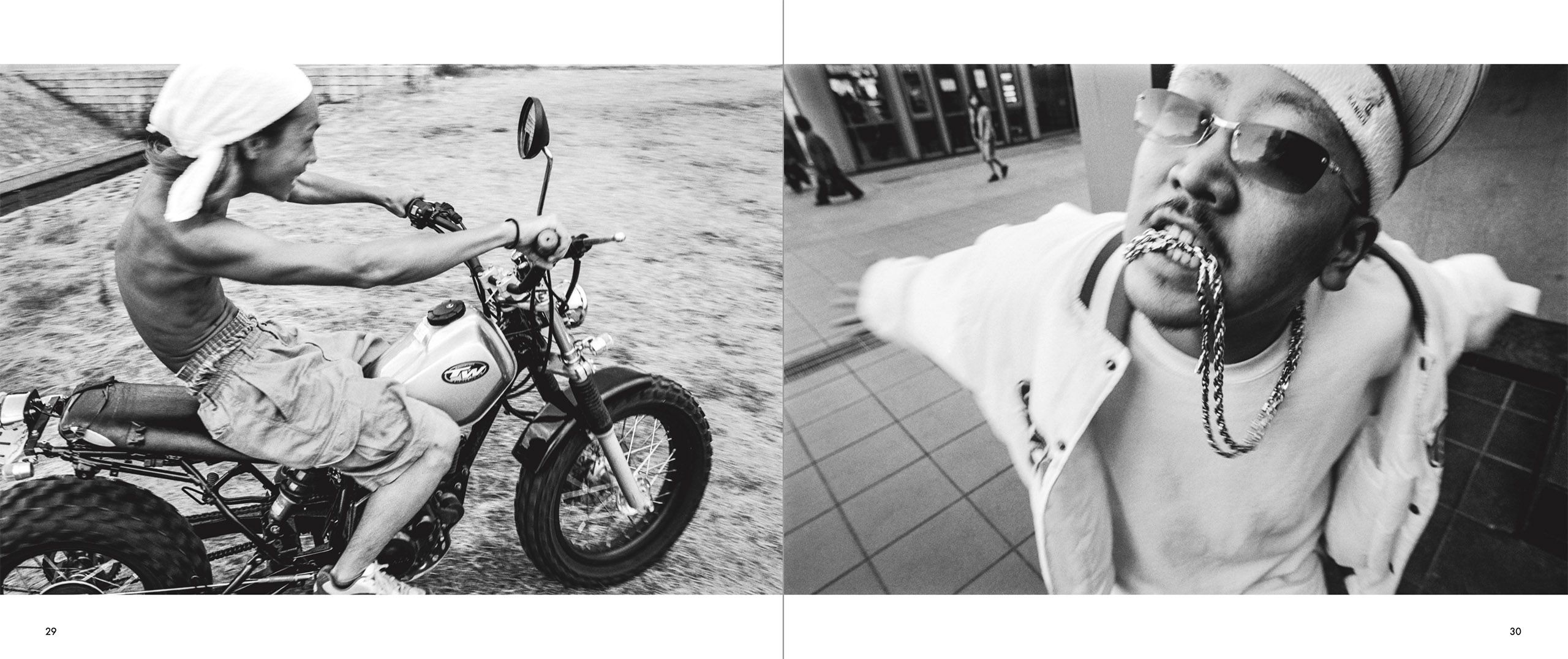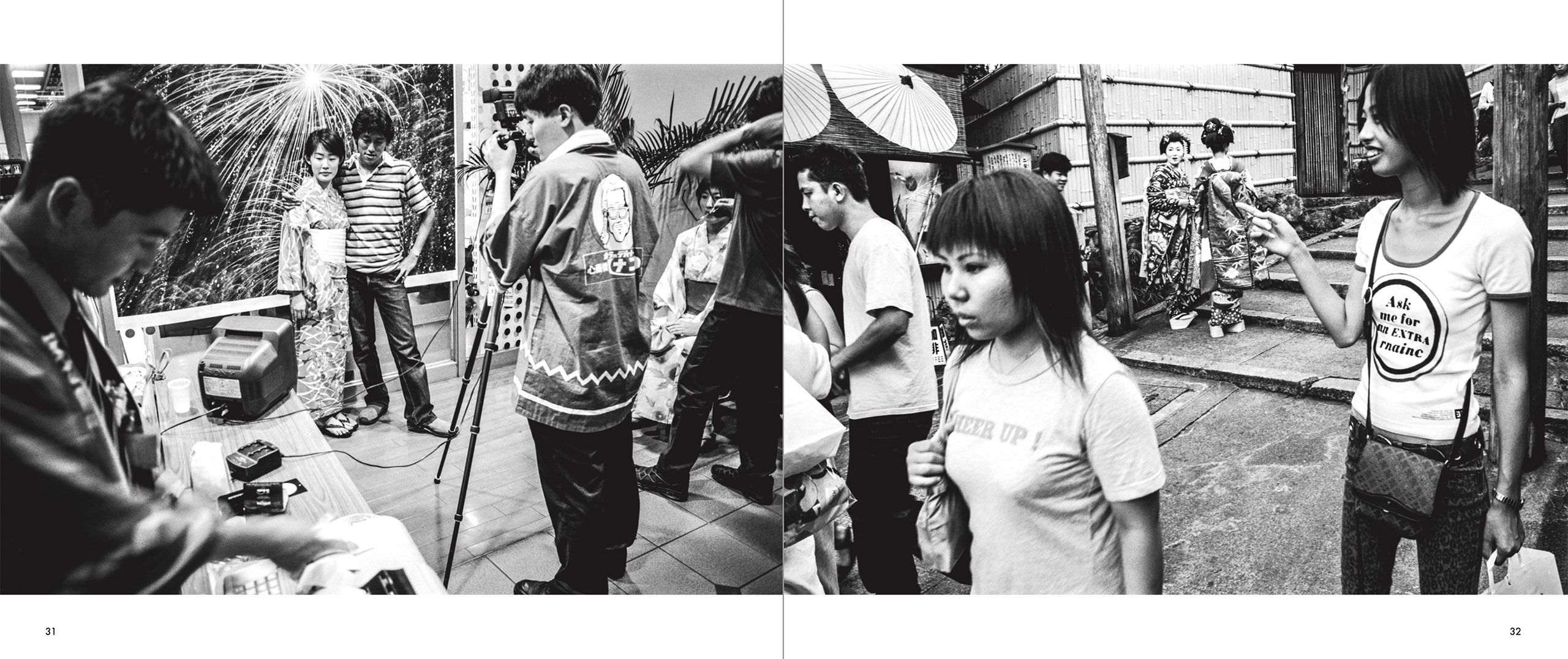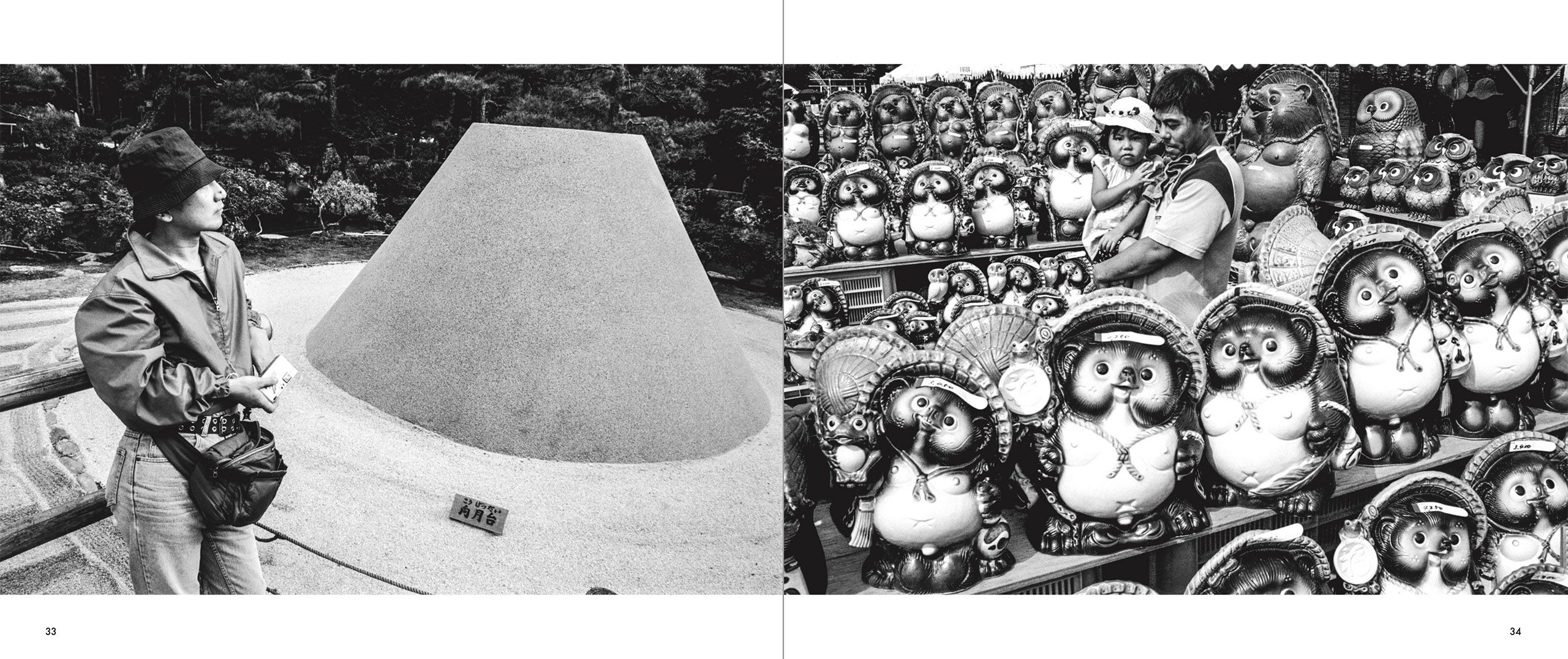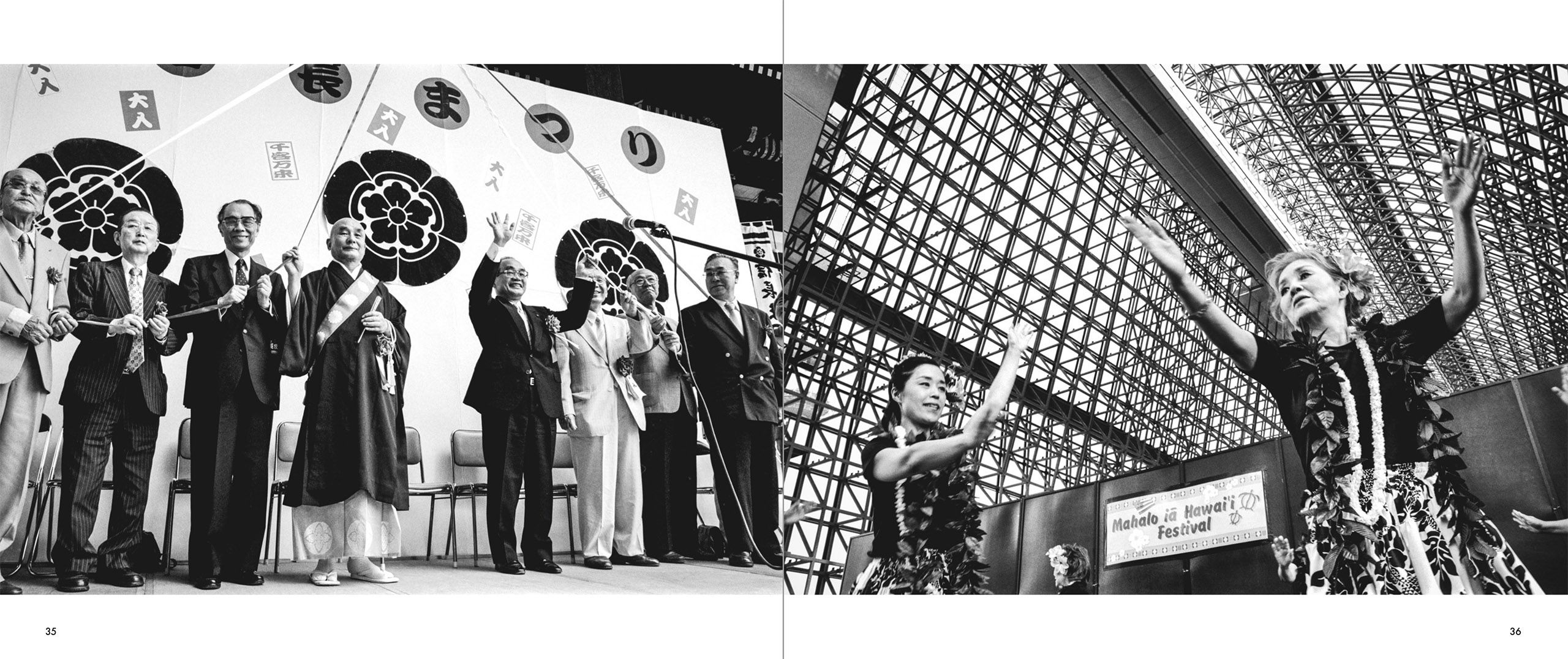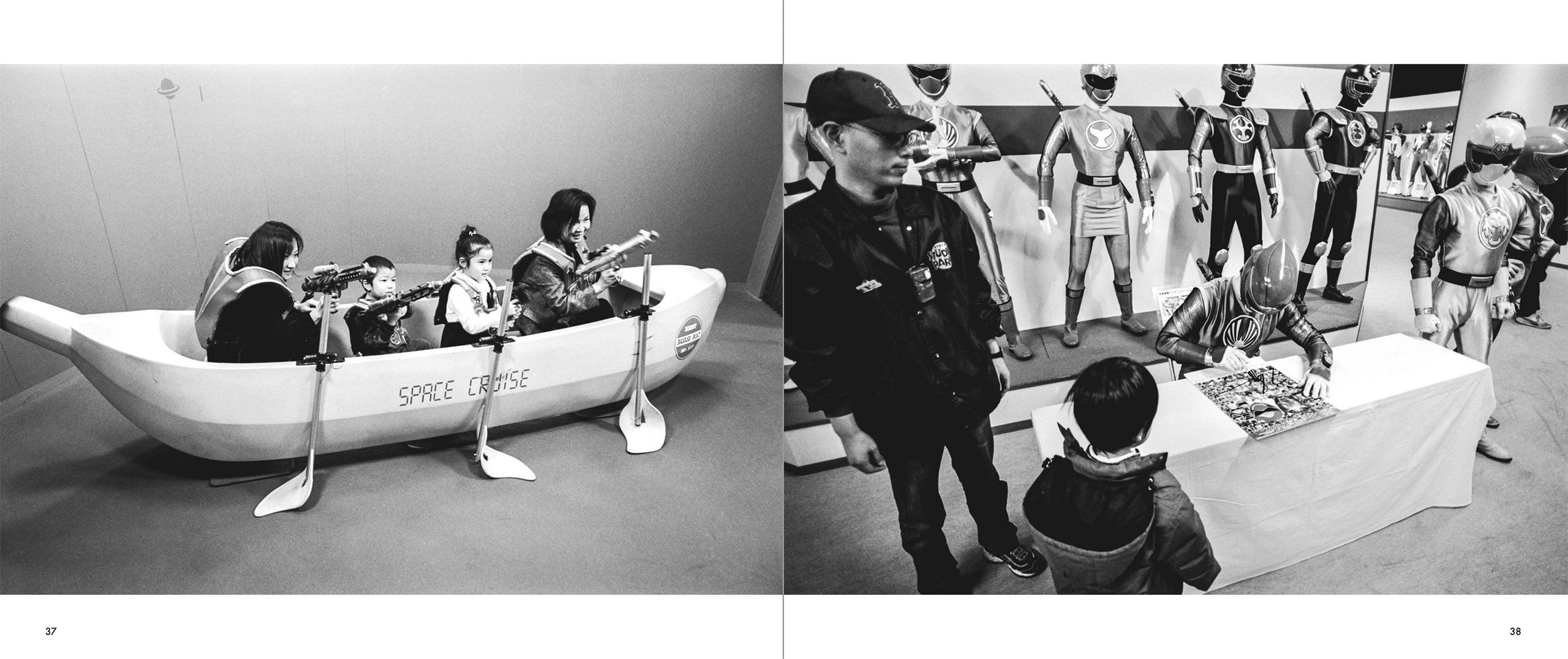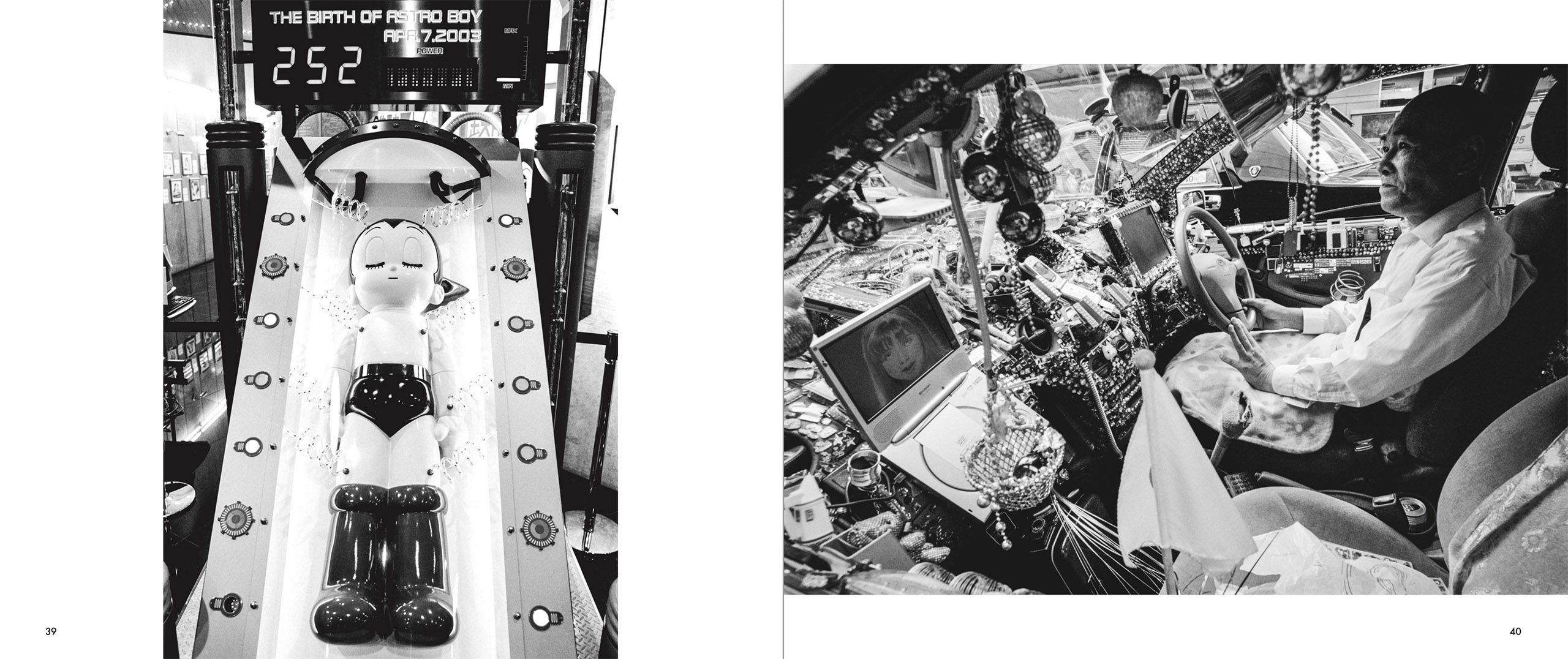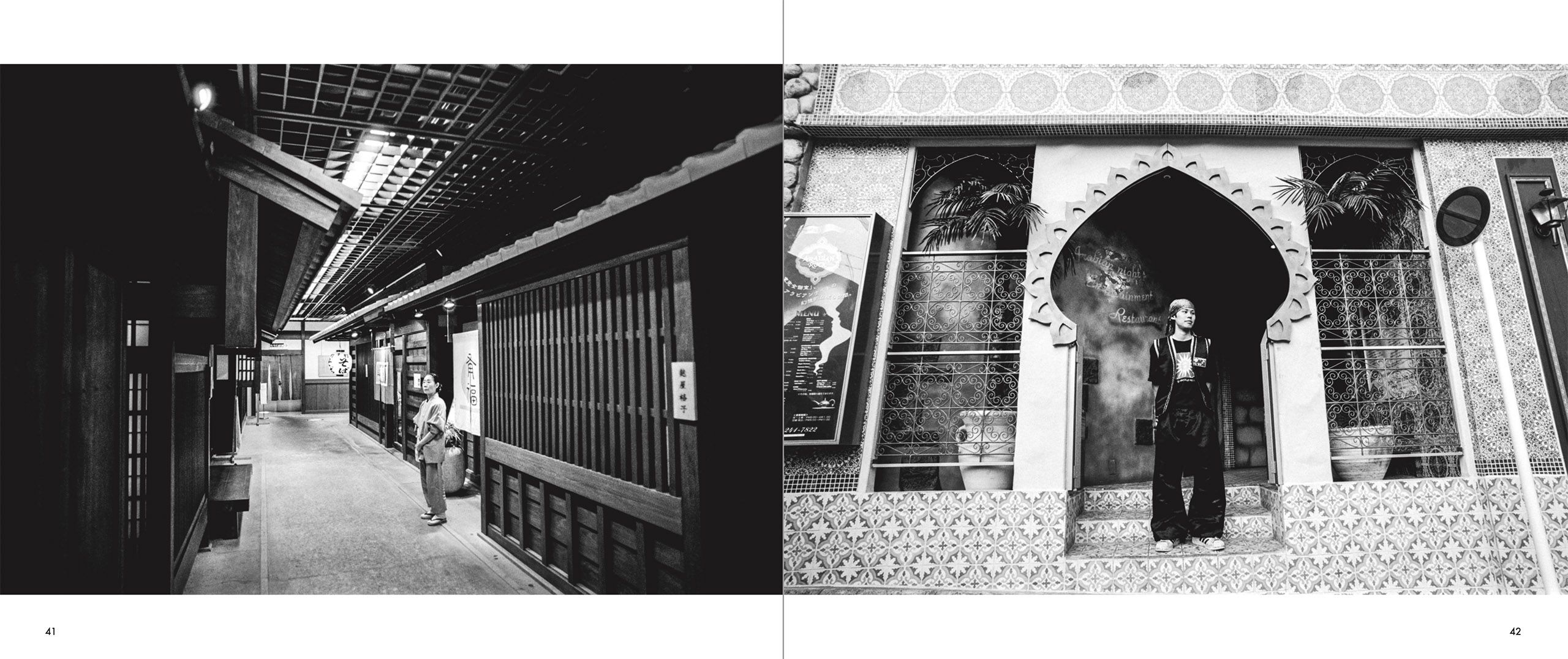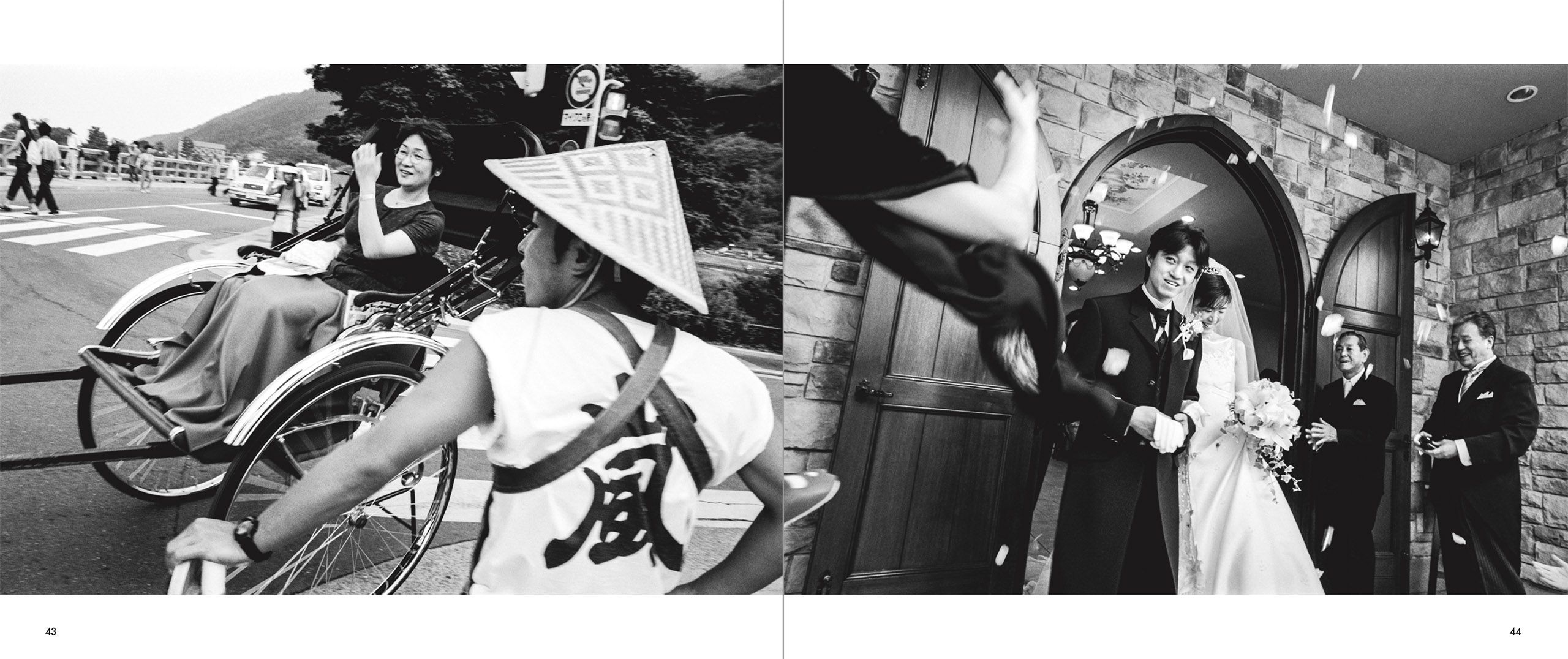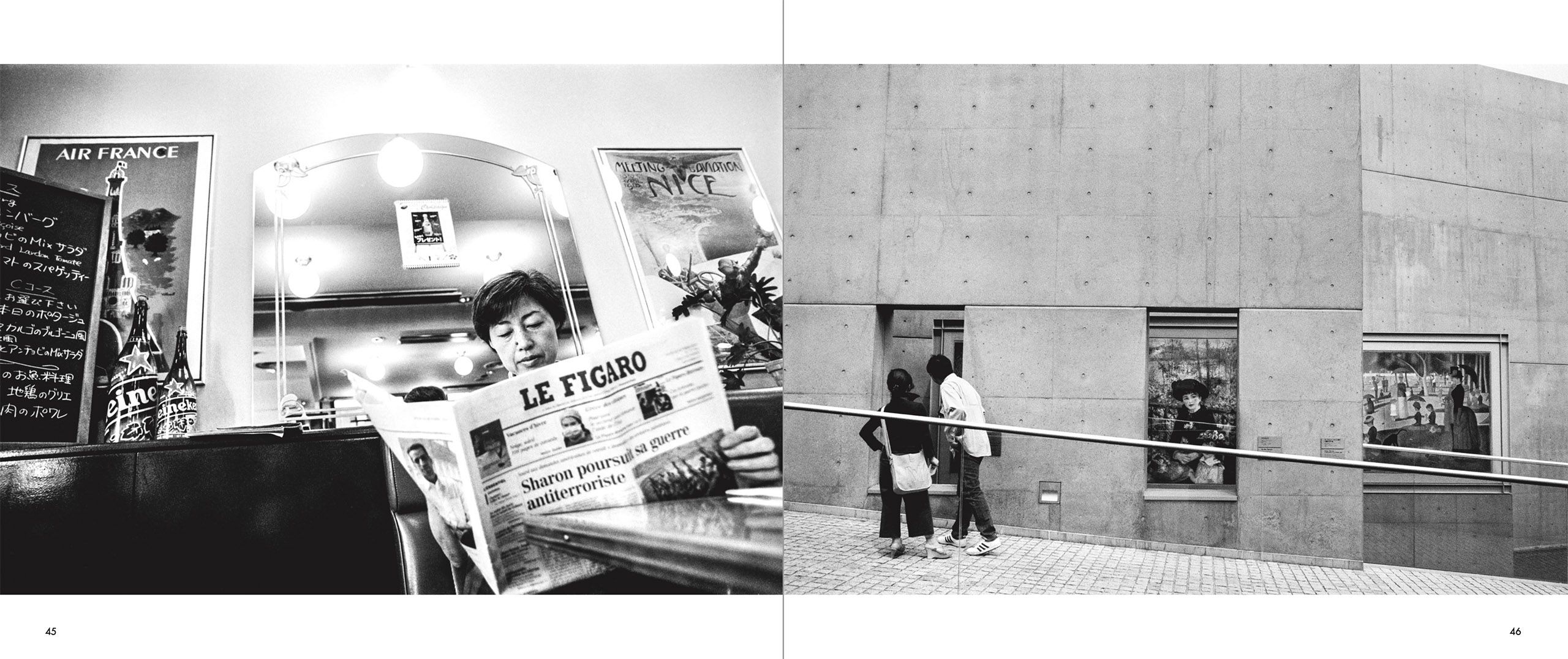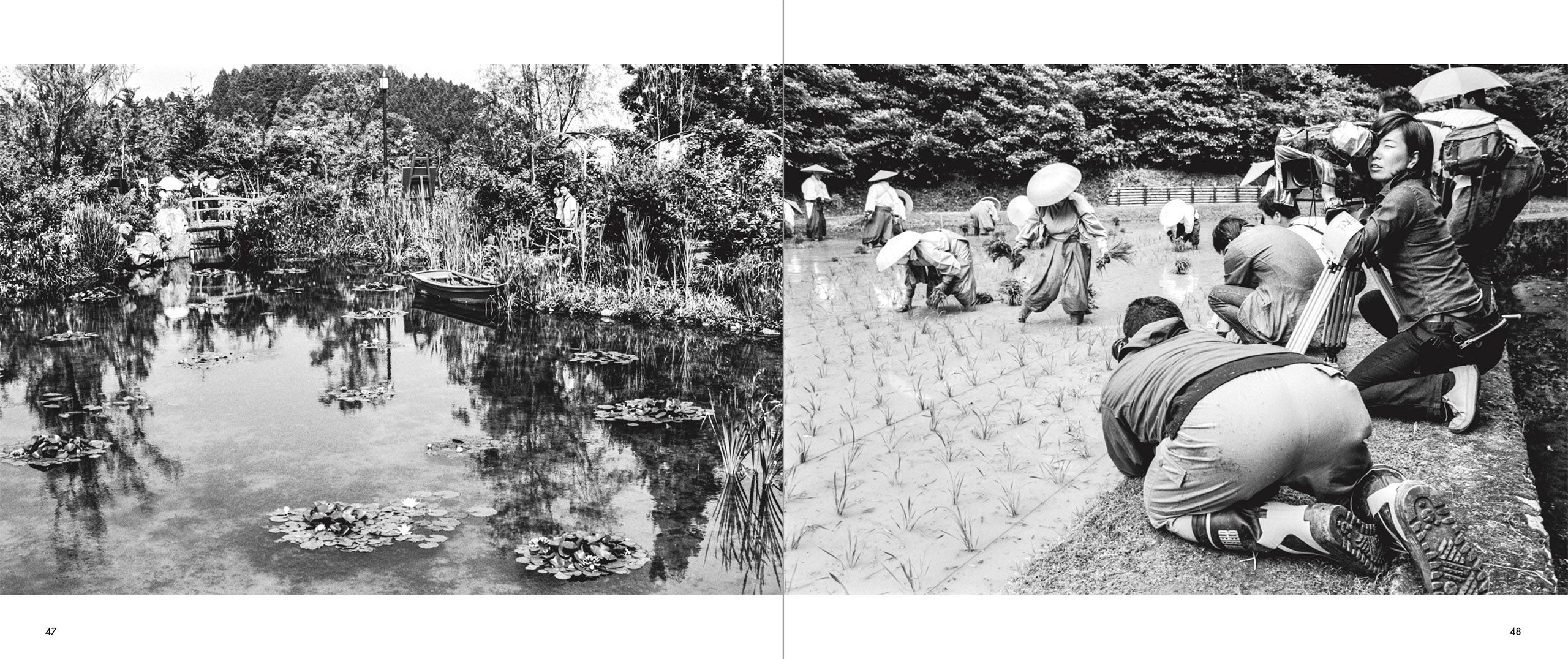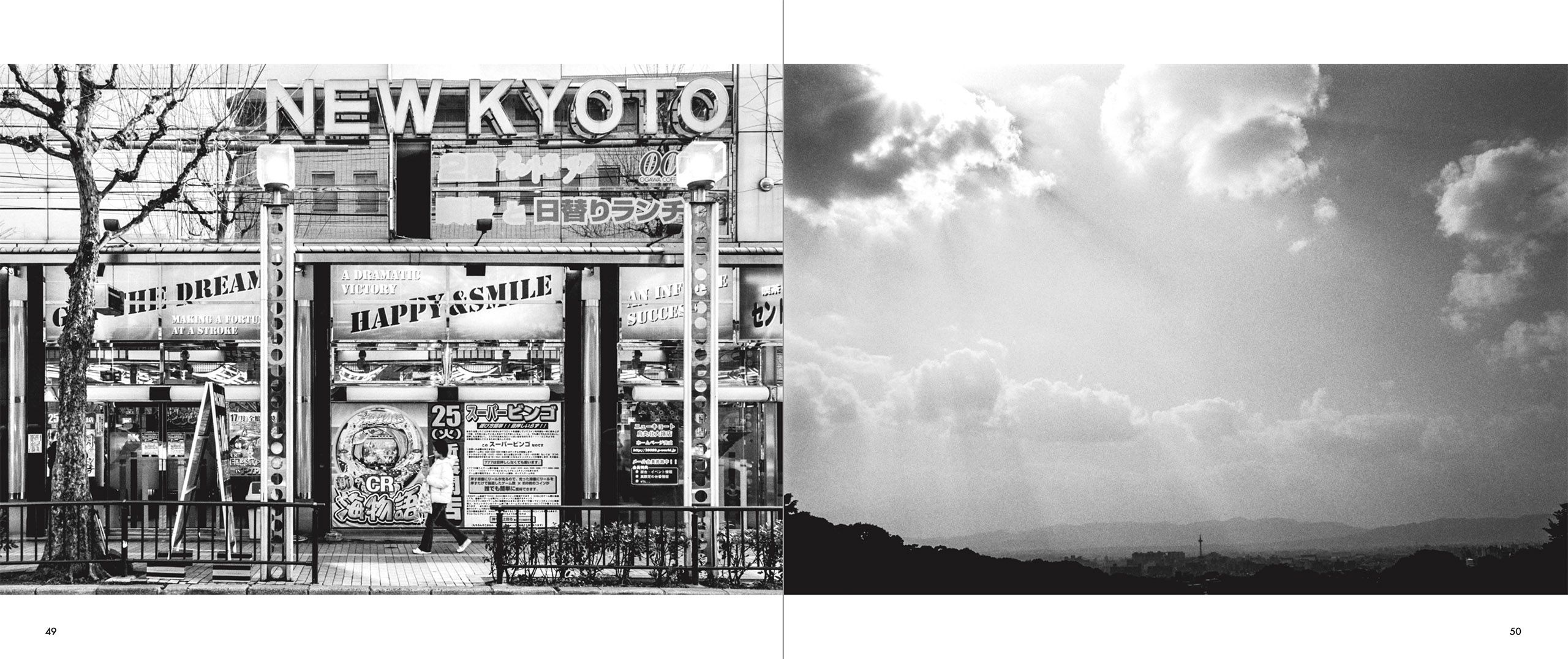KYOTOLAND
Available from Blurb Books.
The first time I saw Kyoto I didn’t realize I’d seen it. Staring out of the airtight windows of the Nozomi Super Express bullet train, heading from Tokyo to Osaka via Kyoto, there was no end to the miles of factories and sterile, cookie-cutter housing projects that sprawl through the densely populated Kanto and Kansai regions of Japan. Occasionally I spotted a rice field or small Buddhist temples and Shinto shrines; at nearly 300 kph they could be glimpsed through the webs of power lines, often squeezed between pre-fabricated homes, golf driving ranges and parking lots. Returning at night, the concrete landscape faded away and was replaced by the lights of the Japanese night - pachinko gambling halls, love motels and massage parlors.
The first time I stepped off the train at Kyoto Station I was confronted by the 131-meter high Kyoto Tower, raised in the city’s heart in 1964. At its base was a statue of Astro Boy with a sign saying “Welcome to Kyoto”. The tallest structure in the city, the tower sits in what looks like a giant, mirrored ramen bowl, crowned with a glass bubble encased in red, steel lattice work. High up inside the bubble, visitors stare out looking for signs of old Kyoto like Captain Ahabs hunting for Moby Dick; it is where any journey into Kyoto starts and it costs 800 yen to go up.
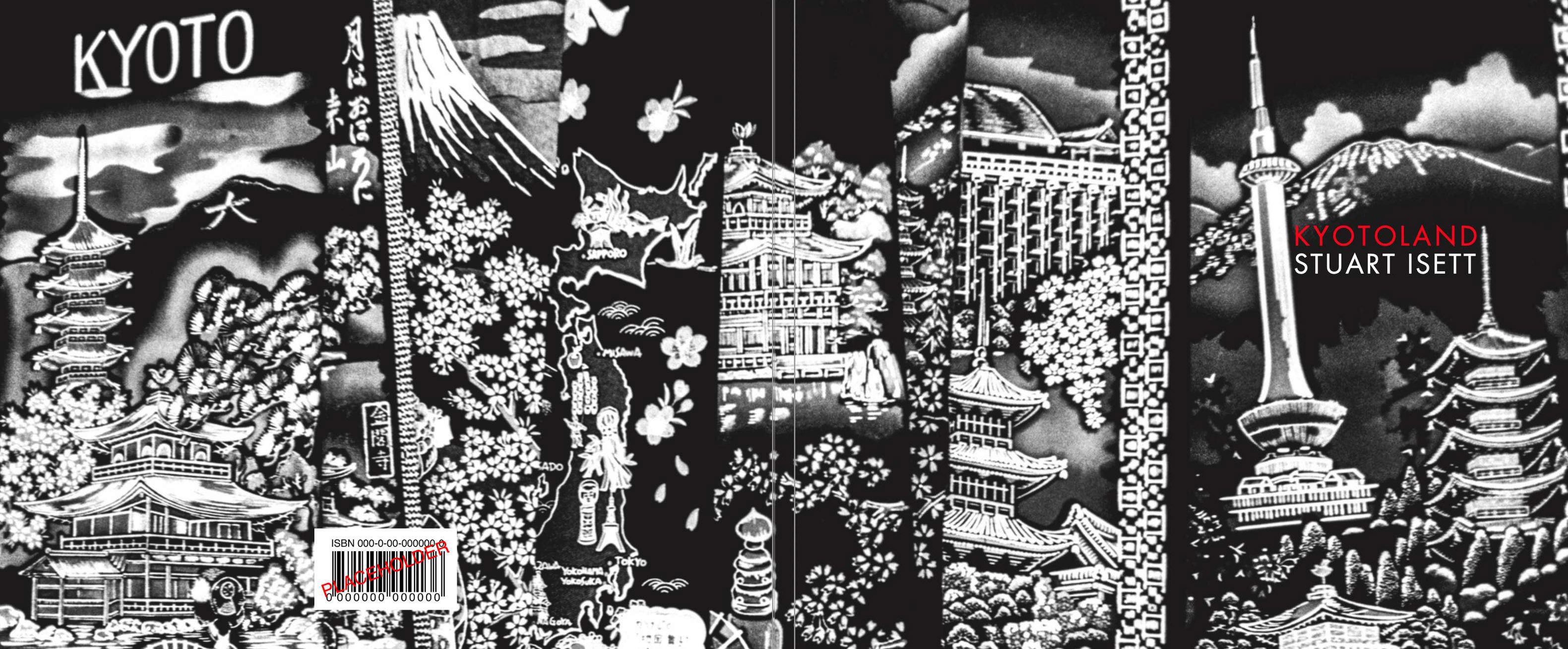
Taken between 2000 and 2003, the photographs in this book were made during these numerous layovers and short visits to the city, when I would often spend 16 hour days criss-crossing the city, exploring the neighborhoods and streets between the well-visited temples and gardens, seeking out not just the center of most visitor’s attention, but also the periphery. The spaces where people who lived in the city actually existed.
Japan-based writer Donald Richie once described Tokyo, his home for over 50 years, as an "illogical, subtle, brash, teeming and utterly human place", giving the city the sobriquet “Tokyoland”. In many ways Richie's description of Tokyo can adapted to Kyoto, a city that quickly confounds its postcard image and a place far more interesting than the idealized visual baggage most people first arrive with. Kyoto has been transformed but whatever the city adopts from the outside always seems to reappear in a new, marvellous and uniquely Japanese forms.
STUART ISETT - 2021

